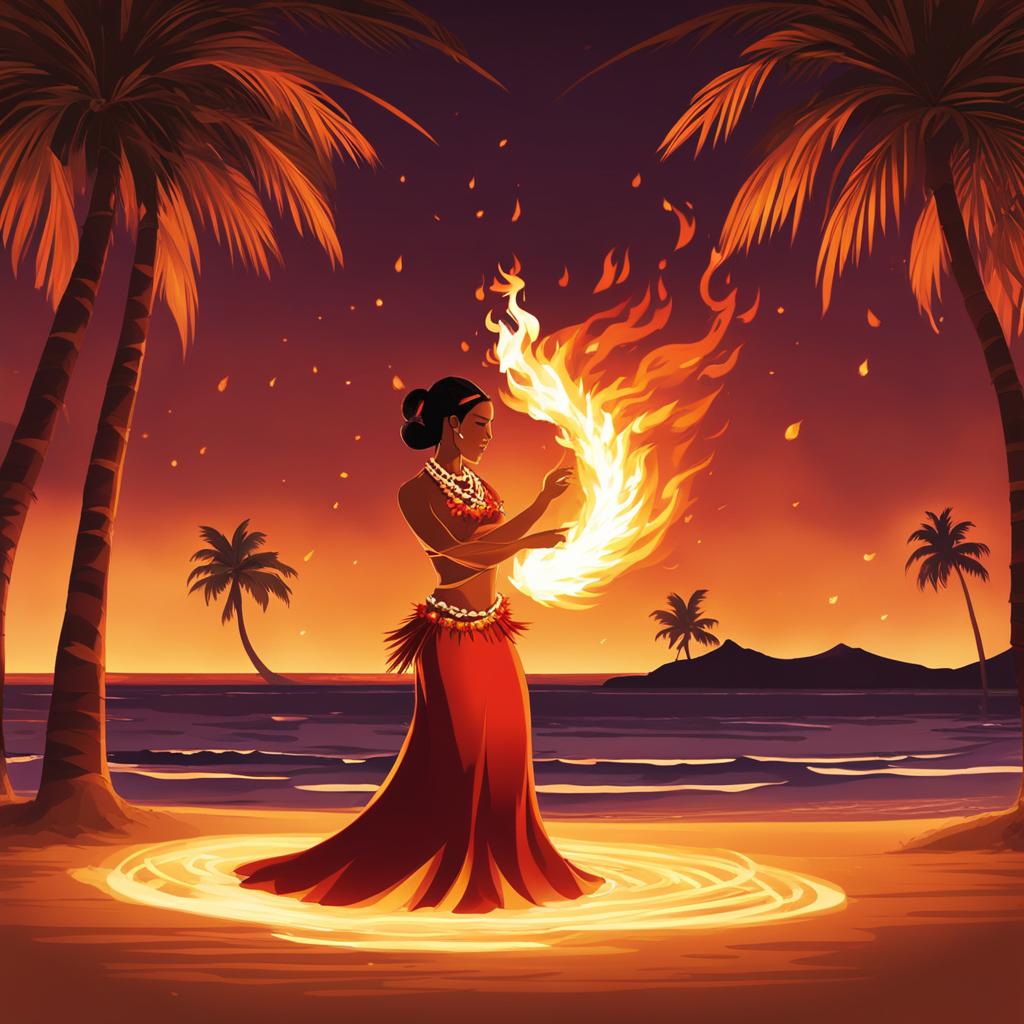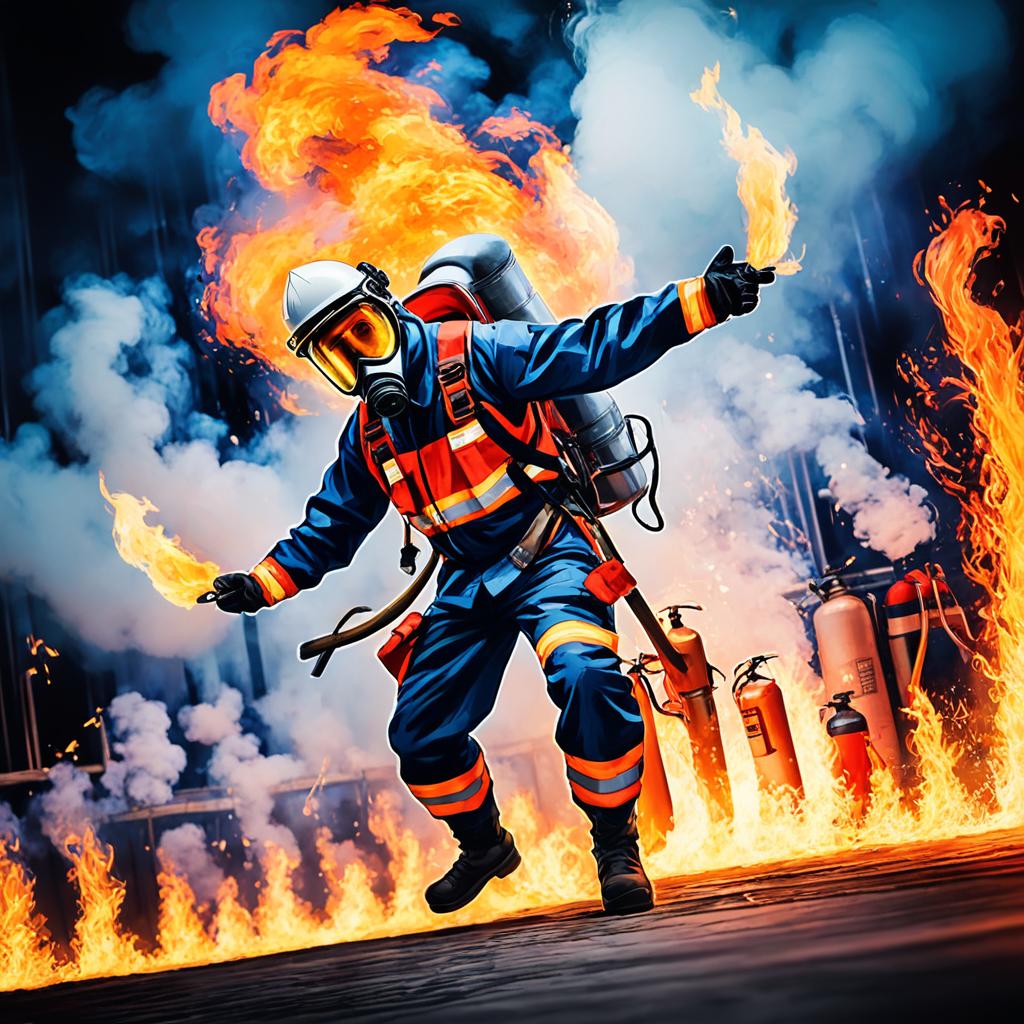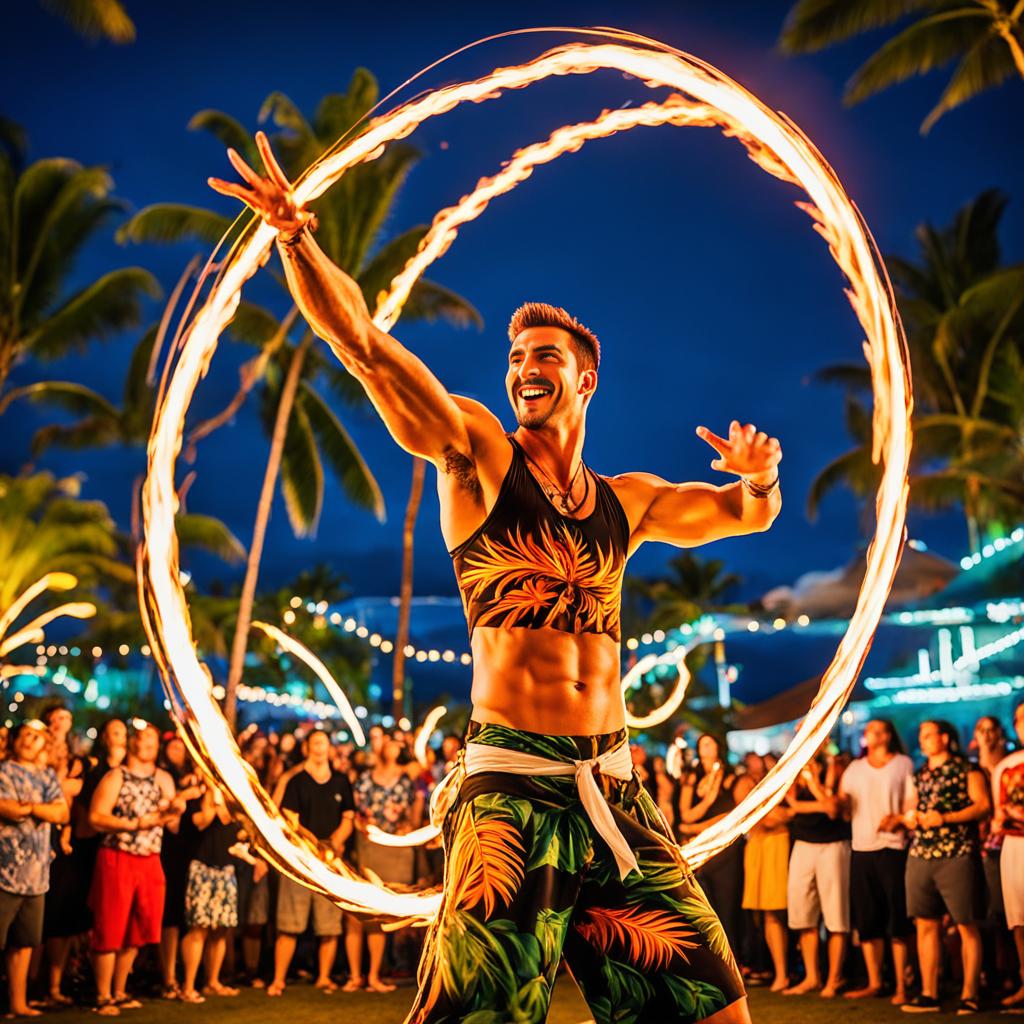Have you ever wondered how much Hawaiian fire dancers earn? It’s a fascinating profession that combines skill, artistry, and the mesmerizing element of fire. But what factors influence their income? Is it solely based on their performance abilities, or are there other factors at play?
In this article, we will delve into the earnings of Hawaiian fire dancers and explore the various factors that can impact their income. From their location to their skill level, we will uncover the secrets behind their earnings. So, if you’re curious about the financial side of this captivating art form, keep reading to discover the truth behind Hawaiian fire dancers’ earnings.
Factors Influencing the Earnings of Hawaiian Fire Dancers
The earnings of Hawaiian fire dancers are influenced by several factors. Firstly, their location plays a role in determining their income. Fire dancers in popular tourist destinations, such as Waikiki Beach, may have more opportunities for performances and higher demand, resulting in higher earnings. Additionally, the experience and skill level of the fire dancer can impact their earnings. Highly experienced and skilled dancers may command higher fees for their performances. The type of event for which they are hired also influences their earnings. Corporate events and high-profile functions tend to offer higher pay compared to smaller private parties or local performances. Overall, the earnings of Hawaiian fire dancers are influenced by a combination of location, experience, skill level, and the type of event they perform at.
Average Earnings of Hawaiian Fire Dancers

While the exact earnings of Hawaiian fire dancers can vary greatly depending on several factors, it is possible to provide a general idea of their average earnings. According to industry sources, professional fire dancers in Hawaii typically charge between $250 and $350 per performance. However, it’s important to note that this figure is an average and can fluctuate based on the dancer’s experience, skill level, and the complexity of the show.
Established dance companies with extensive experience and a strong reputation may charge higher fees than individual dancers who are just starting their careers. To give you a better understanding of the average earnings of Hawaiian fire dancers, the table below showcases the range of fees charged per performance based on the dancer’s experience and skill level:
| Experience Level | Average Earnings per Performance |
|---|---|
| Beginner | $250 – $300 |
| Intermediate | $300 – $350 |
| Advanced/Professional | $350 – $400+ |
It’s important to remember that these figures are averages and can vary based on several factors. The level of demand, the venue, and the type of event can also influence the fees charged by Hawaiian fire dancers. Now that you have an understanding of the average earnings, let’s explore additional performance opportunities and income avenues available to Hawaiian fire dancers.
Additional Performances and Income Opportunities
Hawaiian fire dancers have the opportunity to increase their earnings by offering additional performances and expanding their skill set. By diversifying their repertoire, fire dancers can cater to different types of events and audiences. Here are some additional performance opportunities that can enhance the earnings of Hawaiian fire dancers:
- Corporate Events: Fire dancers can be hired to perform at corporate events such as product launches, company parties, or award ceremonies. These events typically offer higher pay due to the larger budget and the need to create a memorable experience for employees or clients.
- Weddings and Private Events: Fire dancers can add an exciting and unique element to weddings and private parties. They can perform solo acts or collaborate with other entertainers to create a dynamic and visually stunning show.
- Tourist Attractions: In popular tourist destinations like Hawaii, fire dancers have the opportunity to perform at tourist attractions, resorts, or cruise ships, attracting a diverse range of audience members and increasing their exposure.
- Festivals and Cultural Events: Hawaiian fire dancers can participate in festivals and cultural events dedicated to celebrating the local arts and traditions. These events often attract large crowds and offer fire dancers a platform to showcase their skills and earn a higher income.
By actively seeking out and capitalizing on these additional performance and income opportunities, Hawaiian fire dancers can maximize their earnings and establish a thriving career in the industry. Now that we’ve explored the average earnings and additional income avenues, let’s move on to discussing the performance requirements and safety considerations that fire dancers need to be aware of.
Additional Performances and Income Opportunities
Hawaiian fire dancers have the opportunity to expand their income by offering additional performances and diversifying their skill set. By incorporating various elements into their shows and participating in Hawaiian-themed events, fire dancers can tap into additional income opportunities and provide a more dynamic experience for their audiences.
- Adding More Elements: For larger events with bigger budgets, fire dancers can enhance their performances by incorporating additional elements such as fire eaters or fire breathers. These captivating additions can create a more engaging and awe-inspiring show, increasing the value they offer to event organizers.
- Hawaiian-Themed Events: Fire dancers can maximize their income potential by participating in Hawaiian-themed events, where they can combine their skills with other traditional forms of entertainment. Collaborating with hula dancers and steel drum players, for example, can create a complete Polynesian entertainment package that appeals to a broader audience.
By diversifying their performances and offering a wider range of services, fire dancers can attract more clients and increase their earnings. This not only provides them with additional income opportunities but also allows them to showcase their versatility and create memorable experiences for event attendees.
Earning Potential through Additional Performances
Let’s take a closer look at the potential earnings for Hawaiian fire dancers through additional performances. The table below provides an overview of the average income opportunities based on the type of additional performance:
As shown in the table, incorporating fire eaters or fire breathers into their shows can significantly increase the earnings of fire dancers. With the added spectacle and entertainment value, they can command higher fees for their performances. Participating in Hawaiian-themed events also presents a lucrative opportunity, as the demand for Polynesian entertainment remains high.
By leveraging these additional performances and income opportunities, Hawaiian fire dancers can maximize their earning potential and establish themselves as versatile and sought-after performers in the industry.
Performance Requirements and Safety Considerations

When it comes to fire dancing, ensuring the safety of performers and spectators is paramount. To execute their routines safely, Hawaiian fire dancers require adequate space and venues that comply with necessary safety measures. Here are some performance requirements and safety considerations to keep in mind:
- Space: Fire dancing necessitates enough room for performers to move freely and avoid any potential hazards. For solo fire dancers, a minimum space of 12×12 feet is recommended, although more space is always welcome. This allows them to showcase their skills and execute complex maneuvers without risking injuries or accidents.
- Venue: Outdoor venues are generally more suitable for fire performances due to the potential risks and safety concerns involved. However, with proper safety precautions and sufficient space, fire dances can also be conducted indoors. In such cases, it’s essential to ensure that the ceiling height is at least 16-18 feet to accommodate the fire dancer’s movements without compromising safety.
- Fire Safety: Prioritizing fire safety is crucial when hosting a fire show. Ensure that the venue is equipped with appropriate fire safety measures, including fire extinguishers, fire-resistant materials, and sufficient ventilation. It’s advisable to consult local authorities and obtain any necessary permits to ensure compliance with safety regulations.
Adhering to these performance requirements and safety considerations not only protects the well-being of the fire dancers but also guarantees a safe and enjoyable experience for the audience.
The History and Cultural Significance of Fire Dancing in Hawaii
Fire dancing has a rich history and cultural significance in Hawaii. The tradition of Samoan Fire Knife Dancing, which inspired the modern practice of fire dancing, is credited to Freddie Letuli of Samoa. Fire dancing was initially used as a way to showcase a warrior’s prowess and skill.
Over time, fire dancing has been adopted by various Polynesian cultures, including Hawaii, as a form of cultural expression and entertainment. The artistry and skill required to twirl, throw, catch, and dance with a fire knife make fire dancing a captivating and visually stunning spectacle.
Today, Hawaiian fire dancers continue to honor and showcase this cultural tradition, captivating audiences with their performances.
Fire dancing in Hawaii is not only a visually striking performance but also a testament to the history and cultural heritage of the islands. Performers pay homage to the ancestral warriors who first showcased their skills through fire dancing. The combination of dance movements, rhythmic beats, and the enchanting element of fire creates a mesmerizing experience for both locals and visitors.
Moreover, fire dancing has become an integral part of celebrations and events in Hawaii, especially those with a Polynesian theme. Whether it’s a luau, a wedding, or a cultural festival, fire dancing adds an extraordinary touch to the occasion, infusing it with energy, excitement, and a sense of the Hawaiian spirit.
Throughout the islands, fire dancing is ingrained in the local culture, serving as a symbol of pride and a connection to the rich history and traditions of Hawaii. It not only entertains but also helps preserve and pass down the cultural heritage to future generations.
Safety and Regulations for Fire Dancing in Hawaii
Safety is of utmost importance when it comes to fire dancing in Hawaii. As professionals in their craft, fire dancers in Hawaii are required to adhere to strict safety guidelines and regulations set by the Hawaii Fire Department. These guidelines ensure that fire dancers are well-prepared and capable of performing their routines safely, while minimizing the risk of accidents or injuries.
In order to maintain the highest level of safety, fire dancers undergo rigorous training and certification processes. These processes equip them with the necessary skills and knowledge to handle fire props, execute intricate fire dance moves, and manage potential risks. By completing these training programs, fire dancers demonstrate their commitment to safety and professionalism.
Additionally, fire dancers carry insurance coverage to protect themselves and the venues where they perform. This insurance not only provides financial security for the fire dancers in case of accidents or property damage, but it also gives peace of mind to event organizers and venue owners. Having insurance coverage ensures that fire dancing performances can be enjoyed without unnecessary worries or concerns.
By following these safety protocols and adhering to the regulations set by the Hawaii Fire Department, fire dancers in Hawaii can confidently offer thrilling and enchanting performances. Whether they are captivating audiences at beach luaus, corporate events, or private parties, fire dancers prioritize the well-being of everyone involved. With their dedication to safety, fire dancers in Hawaii continue to deliver unforgettable experiences while upholding the highest standards of professionalism.


